|
Réponse |
Message 1 de 107 de ce thème |
|
TABERNACULO =TEMPLO DE SALOMON = KAABA = GIZE= VATICANO= WASHINGTON D.C = NUEVA JERUSALEN = JUAN MARCOS
CENACULO DE JERUSALEN=SAN MARCOS= EUCARISTIA CATOLICA (VESICA PISCIS)= SANTA CENA (NUMERO 13=VESICA PISCIS =ESTRELLA DE 6 PUNTAS)= SANTO GRIAL= ALQUIMIA="AGUJERO DE GUSANO"
"AGUJERO DE GUSANO MUNDIAL" ES VESICA PISCIS. NEXO CON EL CUBO
En diversos periodos de la historia ha sido tema de especulaciones místicas; probablemente los primeros fueron los Pitagóricos, que la consideraban una figura sagrada. La razón matemática de su anchura (medida por los puntos extremos del "cuerpo", sin incluir la "cola") por su altura fue aproximada por el cociente 265:153. Esta razón, que da 1,73203, se consideró un número sagrado llamado la medida del pez. Exactamente, la razón geométrica de estas dimensiones es la raíz cuadrada de 3, o 1,73205... (ya que si se traza la línea recta que une los centros de ambos círculos, junto con los dos puntos donde los círculos se intersecan, se obtienen dos triángulos equiláteros unidos por un lado). El cociente 265:153 es una aproximación a la raíz cuadrada de 3, y tiene la propiedad de que no se puede obtener ninguna aproximación mejor con números más pequeños. El número 153 aparece en el Evangelio de Juan (21:11) como el número de peces que Jesús hizo que se capturaran en la milagrosa captura de los peces, lo que algunos consideran como una referencia cifrada de las creencias pitagóricas.

SANTA CENA=NUMERO 13=VESICA PISCIS ="AGUJERO DE GUSANO" ="MAQUINA DEL TIEMPO"

(ABCD) Double Square in Solomons Temple
EL LUGAR SANTISIMO DEL TABERNACULO Y DEL TEMPLO DE SALOMON TENIA FORMA DE CUBO
NOTEN LA ESTRELLA DE 5 PUNTAS EN EL CENTRO DEL EXAGONO CENTRO DE LA ESTRELLA DE 6 PUNTAS
EL EXAGONO TAMBIEN ES UNA REFERENCIA AL CUBO.
NOTEN QUE EN ESTA ESTRELLA DE 6 PUNTAS HAY 13 TRIANGULOS DE 5 PUNTAS, OSEA QUE NOS DA UN NEXO CON LAS 12 CONSTELACIONES DEL ZODIACO, CON LAS 12 HORAS DEL DIA, CON LAS 12 LUNAS QUE HAY EN EL CALENDARIO, CON LA SANTA CENA EN EL CONTEXTO A LOS 12 APOSTOLES, CON LAS 12 TRIBUS DE ISRAEL, CON EL MERIDIANO DE GREENWICH E INCLUSO CON ROSE LINE, ETC,ETC. TODO TIENE COMO PATRON LA ESTRELLA DE 6 PUNTAS, OSEA LA UNION ENTRE EL HOMBRE Y LA MUJER QUE LA TRADICION RELIGIOSA "OLVIDO". ESTE ES EL PATRON ESOTERICO DETRAS DE APOCALIPSIS 22 EN SU RELACION CON VENUS.

Noten el MONSTRUOSO NUMERO 36, incluso con la FORMA DE ORION, en una estrella de 6 puntas. Son siete pelotitas, con 6 perimetrales. 6x6=36
|
 |

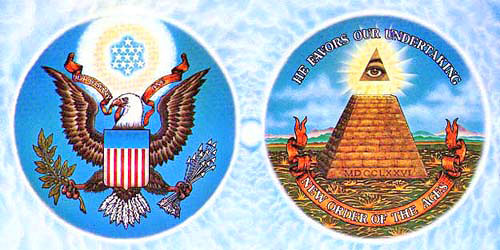
-
There are 13 leaves on the left olive branch with 13 berries.
-
13 stripes on the middle shield.
-
13 arrows on the right.
-
13 stars above the eagles head.
-
13 letters in the "E Pluribus Unum" on the ribbon.
-
13 letters in Annuit Coeptis.
-
There are 13 blocks top to bottom on the pyramid.
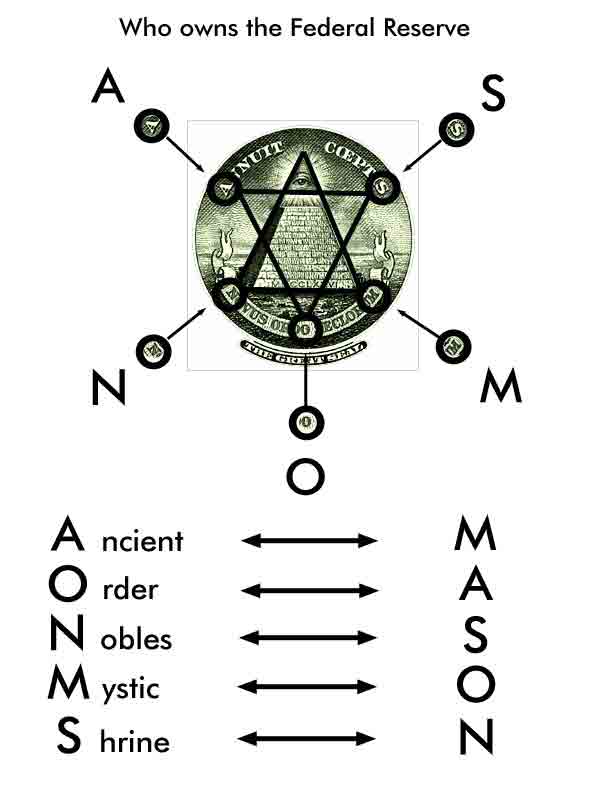
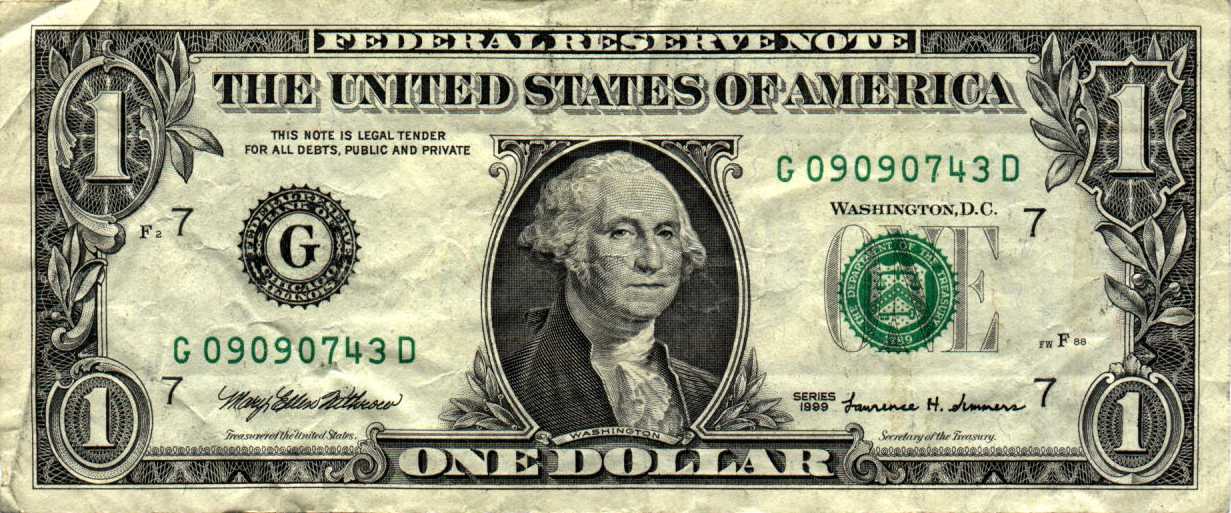
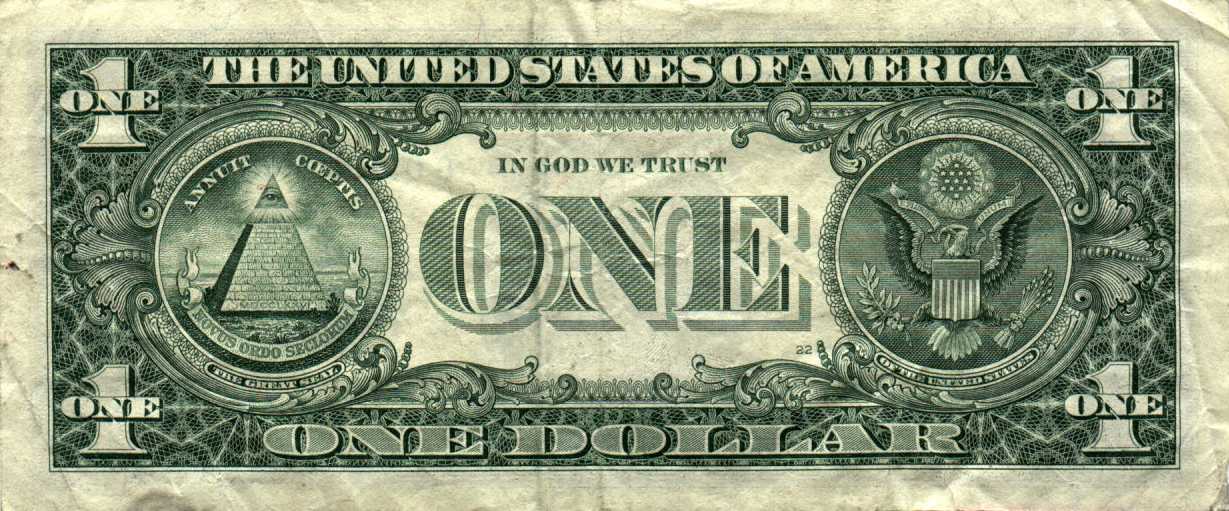
|
NOTEN EL NEXO DE LA SANTA CENA CON EL NUMERO 13 (PATRON ALQUIMICO MUNDIAL="AGUJERO DE GUSANO")
Juan
13:1 Antes de la fiesta de la pascua, sabiendo Jesús que su hora había llegado para que pasase de este mundo al Padre, como había amado a los suyos que estaban en el mundo, los amó hasta el fin. (David significa amado. David es el escritor del salmo 119)
13:2 Y cuando cenaban, como el diablo ya había puesto en el corazón de Judas Iscariote, hijo de Simón, que le entregase, (Hay como una referencia a que JUDAS CONSPIRA CONTRA JUAN MARCOS al mostrar que la palabra es "HIJO DE SIMON")
13:3 sabiendo Jesús que el Padre le había dado todas las cosas en las manos, y que había salido de Dios, y a Dios iba,
13:4 se levantó de la cena, y se quitó su manto, y tomando una toalla, se la ciñó.
13:5 Luego puso agua en un lebrillo, y comenzó a lavar los pies de los discípulos, y a enjugarlos con la toalla con que estaba ceñido. 13:6 Entonces vino a Simón Pedro; y Pedro le dijo: Señor, ¿tú me lavas los pies? 13:7 Respondió Jesús y le dijo: Lo que yo hago, tú no lo comprendes ahora; mas lo entenderás después. 13:8 Pedro le dijo: No me lavarás los pies jamás. Jesús le respondió: Si no te lavare, no tendrás parte conmigo. 13:9 Le dijo Simón Pedro: Señor, no sólo mis pies, sino también las manos y la cabeza. 13:10 Jesús le dijo: El que está lavado, no necesita sino lavarse los pies, pues está todo limpio; y vosotros limpios estáis, aunque no todos. 13:11 Porque sabía quién le iba a entregar; por eso dijo: No estáis limpios todos. 13:12 Así que, después que les hubo lavado los pies, tomó su manto, volvió a la mesa, y les dijo: ¿Sabéis lo que os he hecho? 13:13 Vosotros me llamáis Maestro, y Señor; y decís bien, porque lo soy. (El mismo termino MAESTRO/MASTER tambien tiene una analogia con METER (MADRE EN GRIEGO Y METRO EN FRANCES) /METRO. Esto es una analogia esoterica a LA LINEA ROSA QUE PASA POR PARIS. ESTO SE CONFIRMA POR EL NEXO PEDRO CON EL GALLO EN ESTE MISMO CAPITULO. Recordemos que el metro esta diseñado en funcion al MERIDIANO DE PARIS)
MASTER/MAESTRO/MOTHER-SON/MOTHER-STAR/MASON-13:14 Pues si yo, el Señor y el Maestro, he lavado vuestros pies, vosotros también debéis lavaros los pies los unos a los otros. (El termino maestro/master esconde un nexo esoterico con EL SALMO 119. En la ARGENTINA NO ES CASUALIDAD QUE EL DIA DEL MAESTRO ES EL 11 DE SEPTIEMBRE. DIOS MUEVE LOS HILOS DE TODO. NOTEN QUE SARMIENTO NACIO EN SAN JUAN, TIERRA DEL VINO Y MURIO EN ASUNCION DEL PARAGUAY. Hay un OBVIO NEXO CON MARIA MAGDALENA EN CONTEXTO A LA TIERRA ROJA PARAGUAYA Y A LA ASUNCION DE LA VIRGEN)
13:15 Porque ejemplo os he dado, para que como yo os he hecho, vosotros también hagáis.
13:16 De cierto, de cierto os digo: El siervo no es mayor que su señor, ni el enviado es mayor que el que le envió. (Aqui tenemos un NEXO CON NOE EN CONTEXTO a CAM que es declarado SIERVO DE SEM. Hay un obvio nexo CON EL LINAJE. GENESIS 9)
13:17 Si sabéis estas cosas, bienaventurados seréis si las hiciereis.
13:18 No hablo de todos vosotros; yo sé a quienes he elegido; mas para que se cumpla la Escritura: El que come pan conmigo, levantó contra mí su calcañar.
13:19 Desde ahora os lo digo antes que suceda, para que cuando suceda, creáis que yo soy.
13:20 De cierto, de cierto os digo: El que recibe al que yo enviare, me recibe a mí; y el que me recibe a mí, recibe al que me envió. (IMPRESIONANTE EL MARCO CON EL NIÑO DE MARCOS 9:37, tambien en contexto al SALMO 119)
MARCOS
9:35 Entonces él se sentó y llamó a los doce, y les dijo: Si alguno quiere ser el primero, será el postrero de todos, y el servidor de todos. (UNA REFERENCIA ESPIRITUAL ESOTERICA CON EL SALMO 119, OSEA APOCALIPSIS 1:8, OBVIAMENTE CON FUERTE NEXO CON EL DISCIPULO AMADO Y LA RESURRECCION)
9:36 Y tomó a un niño, y lo puso en medio de ellos; y tomándole en sus brazos, les dijo:
9:37 El que reciba en mi nombre a un niño como este, me recibe a mí; y el que a mí me recibe, no me recibe a mí sino al que me envió. (ES CLARO QUE CRISTO ESTA HABLANDO DEL GRIAL AQUI Y TAMBIEN ES CLARO EL FUERTE MARCO DE LA SANTA CENA, INSISTO EN JUAN 13, CON ESTE NIÑO. RECORDEMOS QUE JUAN MARCOS EN LA EPOCA DE CRISTO ERA UN NIÑO Y QUE INCLUSO LA SANTA CENA FUE EN LA CASA DE MARIA, LA MADRE DE ESTE ULTIMO.)
VOLVIENDO CON JUAN 13
13:21 Habiendo dicho Jesús esto, se conmovió en espíritu, y declaró y dijo: De cierto, de cierto os digo, que uno de vosotros me va a entregar.
13:22 Entonces los discípulos se miraban unos a otros, dudando de quién hablaba.
13:23 Y uno de sus discípulos, al cual Jesús amaba, estaba recostado al lado de Jesús. (ES OBVIO EN TODO ESTE CONTEXTO QUE EL DISCIPULO AMADO ES JUAN MARCOS)
13:25 El entonces, recostado cerca del pecho de Jesús, le dijo: Señor, ¿quién es?
13:26 Respondió Jesús: A quien yo diere el pan mojado, aquél es. Y mojando el pan, lo dio a Judas Iscariote hijo de Simón.
|
|
|
|
|
Réponse |
Message 93 de 107 de ce thème |
|
|
|
|
Réponse |
Message 94 de 107 de ce thème |
|
|
|
|
Réponse |
Message 95 de 107 de ce thème |
|

salt lake city=alchemy (salt)=dollar=$= LOT S WIFE (SODOMA AND GOMORRA)
Cathedral of the Madeleine
From Wikipedia, the free encyclopedia
The Cathedral of the Madeleine is a Roman Catholic church in Salt Lake City, Utah, United States. It was completed in 1909 and currently serves as the cathedral, or mother church, of the Diocese of Salt Lake City. It is the only cathedral in the U.S. under the patronage of St. Mary Magdalene.
Description[edit]
The cathedral was built under the direction of Lawrence Scanlan, the first bishop of Salt Lake City, who dedicated it to St. Mary Magdalene.[2] It was designed by architects Carl M. Neuhausen and Bernard O. Mecklenburg. The exterior is predominantly a Neo-Romanesque design, while the inside displays more Neo-Gothic details. Construction began in 1900 and was completed in 1909. It was dedicated by James Cardinal Gibbons, Archbishop of Baltimore.
It is theorized that Bishop Scanlan chose Mary Magdalene as the patron saint of the Diocese of Salt Lake because her feast day is on July 22, two days before Pioneer Day, a celebration commemorating the arrival of the Mormon pioneers in Salt Lake Valley, so that Catholics would have something to celebrate alongside the region's dominant faith.[3]
The interior of the cathedral was created under the direction of Joseph S. Glass, the second bishop of Salt Lake. Bishop Glass enlisted John Theodore Comes, one of the preeminent architects in the country, to decorate the interior of the cathedral. His plans for the interior were largely based upon the Spanish Gothic style. The colorful murals and polychrome were added at this time, as were the ornate shrines. In 1916, Bishop Glass also changed the name of the cathedral to the French spelling after visiting her purported tomb.[2]
In the 1970s, the exterior of the building was restored, and between 1991 and 1993, the interior of the cathedral was renovated and restored under Bishop William K. Weigand. This included not only the removal of dust and dirt and restoration of the interior but also changes to the liturgical elements of the cathedral to bring them into conformity with certain widespread changes in liturgical practice that developed after the Second Vatican Council.
This included constructing a new altar, moving the cathedra, creating a separate chapel for the Blessed Sacrament, and adding an ample baptismal font. The Blessed Sacrament Chapel also contains the tomb of Bishop Scanlan.[4] Resting atop the tomb is a case containing a small relic of Saint Mary Magdalene. The cathedral in Salt Lake City and the Basilica of Saint-Maximin-la-Sainte-Baume in France are the only cathedrals in the world holding first-class relics of the saint and are named in her honor.[5] The major restoration of the interior of the cathedral was accomplished through the vision of Monsignor M. Francis Mannion.[6]
The cathedral is home to the only co-educational Catholic Choir School in the United States. The Madeleine Choir School, established in 1996, now serves over 400 students in Pre-Kindergarten through Grade Eight.[7] The Cathedral Choir has recorded several CDs and routinely tours both nationally and internationally. In addition to singing daily services at the Cathedral of the Madeleine, choristers have sung at St. Peter's Basilica (Vatican City), Notre Dame de Paris (France), and in churches across the United States of America, Spain, Italy, France, Belgium, and Germany, among other places.[8]
Composer Amédée Tremblay notably served as the church's organist from 1920 to 1925.[9]
-
-
Cathedral of the Madeleine, looking east
-
Interior of the cathedral
-
   |
|
|
|
Réponse |
Message 96 de 107 de ce thème |
|

Jordan River (Utah)
From Wikipedia, the free encyclopedia
The Jordan River, in the state of Utah, United States, is a river about 51 miles (82 km) long. Regulated by pumps at its headwaters at Utah Lake, it flows northward through the Salt Lake Valley and empties into the Great Salt Lake. Four of Utah's six largest cities border the river: Salt Lake City, West Valley City, West Jordan, and Sandy. More than a million people live in the Jordan Subbasin, part of the Jordan River watershed that lies within Salt Lake and Utah counties. During the Pleistocene, the area was part of Lake Bonneville.
Members of the Desert Archaic Culture were the earliest known inhabitants of the region; an archaeological site found along the river dates back 3,000 years. Mormon pioneers led by Brigham Young were the first European American settlers, arriving in July 1847 and establishing farms and settlements along the river and its tributaries. The growing population, needing water for drinking, irrigation, and industrial use in an arid climate, dug ditches and canals, built dams, and installed pumps to create a highly regulated river.
Although the Jordan was originally a cold-water fishery with 13 native species, including Bonneville cutthroat trout, it has become a warm-water fishery where the common carp is most abundant. It was heavily polluted for many years by raw sewage, agricultural runoff, and mining wastes. In the 1960s, sewage treatment removed many pollutants. In the 21st century, pollution is further limited by the Clean Water Act, and, in some cases, the Superfund program. Once the home of bighorn sheep and beaver, the contemporary river is frequented by raccoons, red foxes, and domestic pets. It is an important avian resource, as are the Great Salt Lake and Utah Lake, visited by more than 200 bird species.
Big Cottonwood, Little Cottonwood, Red Butte, Mill, Parley's, and City creeks, as well as smaller streams like Willow Creek at Draper, Utah, flow through the sub-basin. The Jordan River Parkway along the river includes natural areas, botanical gardens, golf courses, and a 40-mile (64 km) bicycle and pedestrian trail, completed in 2017.[6]
The Jordan River is Utah Lake's only outflow. It originates at the northern end of the lake between the cities of Lehi and Saratoga Springs. It then meanders north through the north end of Utah Valley for approximately 8 miles (13 km) until it passes through a gorge in the Traverse Mountains, known as the Jordan Narrows. The Utah National Guard base at Camp Williams lies on the western side of the river through much of the Jordan Narrows.[7][8] The Turner Dam, located 41.8 miles (67.3 km) from the river's mouth (or at river mile 41.8) and within the boundaries of the Jordan Narrows, is the first of two dams of the Jordan River. Turner Dam diverts the water to the right or easterly into the East Jordan Canal and to the left or westerly toward the Utah and Salt Lake Canal. Two pumping stations situated next to Turner Dam divert water to the west into the Provo Reservoir Canal, Utah Lake Distribution Canal, and Jacob-Welby Canal. The Provo Reservoir Canal runs north through Salt Lake County, Jacob-Welby runs south through Utah County. The Utah Lake Distribution Canal runs both north and south, eventually leading back into Utah Lake.[9] Outside the narrows, the river reaches the second dam, known as Joint Dam, which is 39.9 miles (64.2 km) from the river's mouth. Joint Dam diverts water to the east for the Jordan and Salt Lake City Canal and to the west for the South Jordan Canal.[10][11][12]
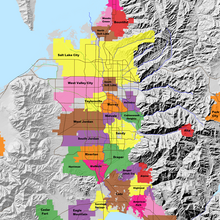
Map of the Salt Lake Valley
The river then flows through the middle of the Salt Lake Valley, initially moving through the city of Bluffdale and then forming the border between the cities of Riverton and Draper.[7] The river then enters the city of South Jordan where it merges with Midas Creek from the west. Upon leaving South Jordan, the river forms the border between the cities of West Jordan on the west and Sandy and Midvale on the east. From the west, Bingham Creek enters West Jordan. Dry Creek, an eastern tributary, combines with the main river in Sandy. The river then forms the border between the cities of Taylorsville and West Valley City on the west and Murray and South Salt Lake on the east. The river flows underneath Interstate 215 in Murray. Little and Big Cottonwood Creeks enter from the east in Murray, 21.7 miles (34.9 km) and 20.6 miles (33.2 km) from the mouth respectively. Mill Creek enters on the east in South Salt Lake, 17.3 miles (27.8 km) from the mouth. The river runs through the middle of Salt Lake City, where the river travels underneath Interstate 80 a mile west of downtown Salt Lake City and again underneath Interstate 215 in the northern portion of Salt Lake City. Interstate 15 parallels the river's eastern flank throughout Salt Lake County. At 16 miles (26 km) from the mouth, the river enters the Surplus Canal channel. The Jordan River physically diverts from the Surplus Canal through four gates and heads north with the Surplus Canal heading northwest. Parley's, Emigration, and Red Butte Creeks converge from the east through an underground pipe, 14.2 miles (22.9 km) from the mouth.[7] City Creek also enters via an underground pipe, 11.5 miles (18.5 km) from the river's mouth. The length of the river and the elevation of its mouth varies year to year depending on the fluctuations of the Great Salt Lake caused by weather conditions. The lake has an average elevation of 4,200 feet (1,300 m) which can deviate by 10 feet (3.0 m).[3] The Jordan River then continues for 9 to 12 miles (14 to 19 km) with Salt Lake County on the west and North Salt Lake and Davis County on the east until it empties into the Great Salt Lake.[7][8][11]
Discharge[edit]
The United States Geological Survey maintains a stream gauge in Salt Lake City that shows annual runoff from the period 1980–2003 is just over 150,000 acre-feet (190,000,000 m3) per year or 100 percent of the total 800,000 acre-feet (990,000,000 m3) of water entering the Jordan River from all sources. The Surplus Canal carries almost 60 percent of the water into the Great Salt Lake, with various irrigation canals responsible for the rest. The amount of water entering the Jordan River from Utah Lake is just over 400,000 acre-feet (490,000,000 m3) per year. Inflow from the 11 largest streams feeding the Jordan River, sewage treatment plants, and groundwater each account for approximately 15 percent of water entering the river.[13]
Watershed[edit]
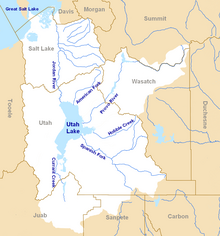
Map of the entire Jordan River Basin
|
|
|
|
Réponse |
Message 97 de 107 de ce thème |
|
|
|
|
Réponse |
Message 98 de 107 de ce thème |
|
|
|
|
Réponse |
Message 99 de 107 de ce thème |
|
|
|
|
Réponse |
Message 100 de 107 de ce thème |
|
|
|
|
Réponse |
Message 101 de 107 de ce thème |
|
|
|
|
Réponse |
Message 102 de 107 de ce thème |
|
Astronomical alignment[edit]
Looking east through nave on 23 June 1976, two days after the summer solstice Mary Magdalene's relics in the crypt
In 1976, Hugues Delautre, one of the Franciscan fathers charged with stewardship of the Vézelay sanctuary, discovered that beyond the customary east-west orientation of the structure, the architecture of La Madeleine incorporates the relative positions of the Earth and the Sun into its design. Every June, just before the feast day of Saint John the Baptist, the astronomical dimensions of the church are revealed as the sun reaches its highest point of the year, at local noon on the summer solstice, when the sunlight coming through the southern clerestory windows casts a series of illuminated spots precisely along the longitudinal center of the nave floor.[13][14][15][16][17]
|
|
|
|
Réponse |
Message 103 de 107 de ce thème |
|
|
|
|
Réponse |
Message 104 de 107 de ce thème |
|
|
|
|
Réponse |
Message 105 de 107 de ce thème |
|
|
|
|
Réponse |
Message 106 de 107 de ce thème |
|
|
|
|
Réponse |
Message 107 de 107 de ce thème |
|
 archivo archivo
13 julio 1969: Pablo VI recuerda en ángelus la primera misión del "Apollo 11"
El Osservatore Romano, recuerda esta efemérides, en lo que fue un momento histórico, que marco el mundo. Marcello Filotei recuerda el 20 de julio cuando los astronautas llegaron a la luna
Patricia Ynestroza-Ciudad del Vaticano
“La ciencia ficción se hizo realidad el 20 de julio de 1969, cuando los astronautas estadounidenses Neil Armstrong y Buzz Aldrin pisaron la luna a la que habían llegado después de cuatro días de viaje a bordo del Apollo 11. El tercer miembro de la misión, Michael Collins tuvo mala suerte, a pesar de que él dijo que no”.
Filotei recuerda que Collins era el único que podía pilotar el módulo de mando, y tenía que permanecer en órbita mientras los otros dos saltaban a la superficie lunar mientras el mundo los miraba en mundovisión. Era necesario, sin él, la misión no habría tenido éxito, pero no “debería haber sido fácil mantenerse alejado como Moisés para contemplar la "Luna prometida" sin poder alcanzarla. En cada órbita durante 48 minutos permaneció fuera del contacto por radio con la Tierra, las emociones que sintió, según informó, no eran de miedo ni de soledad, sino de "conciencia, anticipación, satisfacción, confianza, casi exaltación". En cualquier caso, continuó: "es desde los tiempos de Adán que nadie ha conocido semejante soledad humana".”
El momento de bajar a la luna
Los otros dos astronautas, tomaron más tiempo del esperado para salir del transbordador, “porque la mochila que llevaban detrás de ellos para asegurar su supervivencia era demasiado grande para pasar fácilmente por la escotilla”, cuenta Filotei, después de haber recolectado más de veinte kilogramos de piedras y haber plantado la bandera, en realidad solo lograron clavarla algunos centímetros porque el suelo era particularmente duro, regresaron a la nave.
Ante las maravillas de Dios ¿qué es el hombre?
Armstrong y Aldrin antes de regresar a la nave, dejaron en la superficie lunar una placa de oro en la que estaba grabado el Salmo 8: "Cuando veo tus cielos, obra de tus dedos, la luna y las estrellas que tú formaste, Digo: ¿Qué es el hombre, para que tengas de él memoria, y el hijo del hombre, para que lo visites? Le has hecho poco menor que los ángeles, y lo coronaste de gloria y de honra. Le hiciste señorear sobre las obras de tus manos; Todo lo pusiste debajo de sus pies”.
Papa Pablo VI quiso este mensaje en la luna
El mensaje al cosmos le había sido confiado por Pablo VI, quien ya había dirigido su pensamiento a la misión una semana antes. Fue el 13 de julio cuando el Papa Montini enfatizó que el momento iba "más allá de los elementos descriptivos de este hecho único y maravilloso". Se estaba haciendo historia y lo que más sorprendió al Papa fue "ver que no se trata de sueños". "La ciencia ficción se convierte en realidad", dijo, pero no se detuvo allí, sino que captó un aspecto particular de la misión: "Si consideramos la organización de cerebros, actividades, instrumentos, medios económicos, con todos los estudios, experimentos, Los intentos, la hazaña, la admiración se convierte en reflexión y la reflexión se curva sobre el hombre, el mundo, la civilización, de donde brotan novedades de tal sabiduría y de tal poder ".
Una vez más volvieron a surgir las preguntas habituales: "¿Quién es capaz de hacer tanto? tan pequeño, tan frágil, tan similar al animal, que no cambia y no sobrepasa por sí mismo los límites de sus instintos naturales, y tan superior, tan maestro de las cosas, ¿tan victorioso en el tiempo y el espacio? ¿Quiénes somos? Seiscientos millones de personas vieron la luna en vivo. La intuición de Pablo VI llamó la atención sobre la mano del hombre, colocando "esta criatura de Dios, incluso más que la misteriosa Luna, en el centro de este viaje".
https://www.vaticannews.va/es/papa/news/2019-07/efemerides-papa-pablo-vi-llegada-a-la-luna.html |
|
|
|
|
|
 Premier Premier
 Précédent
93 a 107 de 107
Suivant Précédent
93 a 107 de 107
Suivant
 Dernier
Dernier

|

